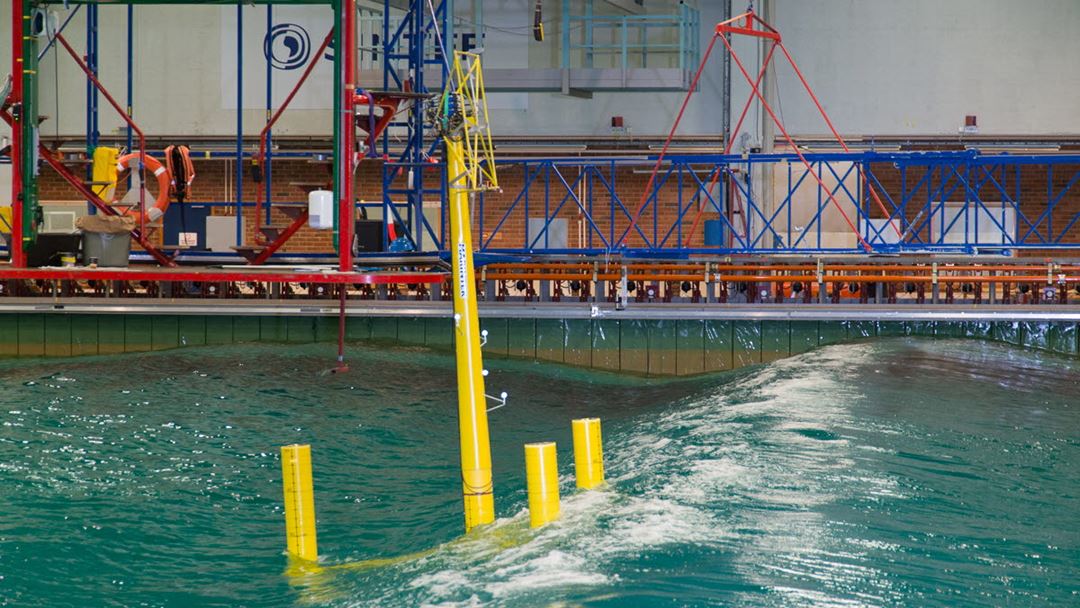The industry is predicting a bright future for floating offshore wind farms. An entirely new concept has recently been tested in Trondheim.

“Our main aim is to see the turbine out at sea and producing energy”, says Olav Weider, Managing Director at the Norwegian company Dr.techn.Olav Olsen AS. “Clean energy for the world. We believe that offshore wind has an important part to play in the green transition, and this is a milestone on the road towards that aim”, he says.
There are only a few floating wind turbines in the world at present. This autumn, Statoil installed the first wind farm consisting of floating turbines off the coast of Aberdeenshire in Scotland. Many more players are now entering the scene, all in the hope that technological advances will help to reduce costs and increase energy production.
“We believe that offshore wind has a big future”, says Leif Delp, a Project Director at Statoil. “We are now on the start line in terms of concept development”, he says. “Clearly we need to optimise our concepts and achieve better profitability, and this process is now under way. As more players enter the scene, perhaps coming up with new and exciting projects, we will definitely see dramatic reductions in the costs associated with power generation from floating wind turbines”, says Delp.
Long-lived concrete structures
Representatives of the industry and researchers met recently at SINTEF Ocean’s SeaLab facility where the final model tests of Dr.techn.Olav Olsens innovation were being carried out. The model was tested under normal current, wave and wind conditions, and was also subjected to extreme weather testing. The unique aspect of the company’s concept is that the turbine is of concrete construction. It is thus anticipated to have a long life with little need for extensive maintenance.
“We believe that the mass production of floating wind turbines will be easier than for fixed structures because the latter have to be specially tailored to the seabed conditions and water depths at the locations where they are installed”, says Weider. “Floating turbines can be much more adaptable in terms of their location”, he says.
Researchers at SINTEF are receiving an increasing number of requests from wind energy generating companies regarding the further development and testing of technologies for application in offshore energy production. The EU project LIFES50+ has enabled SINTEF’s team to develop a unique test method called “Real-Time Hybrid Model (ReaTHM®)”.
Model test tailored to offshore wind
“The wind turbine is exposed to physical waves and currents, and simulated wind loads – all in real time”, says Maxime Thys, a researcher at SINTEF Ocean. “The method provides considerable flexibility and reduces costs”, he says. “Costs are lower because we don’t have to design and build a rotor for the model. Flexibility is achieved because we can supply wind from various directions and can also simulate extreme conditions which it may be dangerous to implement using a physical model with a rotor”, he says.
The turbine tested at SINTEF was a 10 megawatt facility designed for installation in about 130 metres of water offshore Maine in the US.
“Statoil has prepared the ground with its own Hywind turbines”, says Weider. “A lot is happening in France, Japan and other places around the world. Offshore wind generation has been talked about for a long time, and is now becoming a significant market”, he says.

